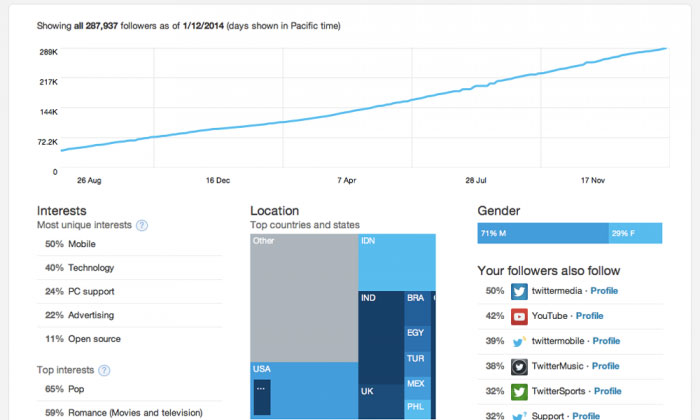
Lunchtime Links: Twitter Analytics Get Supercharged
With a new analytics platform, Twitter tells you more about your tweets than you've ever known before. Also: The social platforms where nonprofits go to try new things.
With a new analytics platform, Twitter tells you more about your tweets than you’ve ever known before. Also: The social platforms where nonprofits go to try new things.
For years, we’ve known that Twitter has been an important resource for drawing traffic and building influence. But at the same time, Twitter’s mystique hid the proof of ROI. The analytics it offered publishers were long limited to favorites and retweets.
But a new analytics platform from Twitter itself changes all that. Learn all about it in today’s Lunchtime Links:
What’s in the Cards? For years, publishers have been trying to get a better handle on the return on investment that Twitter offers them—and developers have tried to keep up by offering a huge number of options that help make sense of what’s happening with their traffic and their reach. But as it turns out, the best way to check your reach on Twitter is now through Twitter itself. On Thursday, the company launched a new analytics tool reliant on its Twitter Cards platform, which allows developers to offer up photos, videos, and content previews in the Twitter interface. While that approach has done much to extend Twitter’s capabilities, the new Card-reliant analytics do for it what Google Analytics do for Google—they explain, in extreme depth, how your content is doing on the platform. The value proposition is clear. “Until now, Twitter’s most important content creators have to some degree been tweeting in the dark,” TechCrunch‘s Josh Constine explains. “The analytics dashboard could let them hone their publishing strategy, whether they’re trying to gain widespread mindshare through retweets, drive specific business objectives through URL clicks, or grow their audience for the long-term.” Learn more about how to set up Twitter Cards over this way.
The social experiments: We’re quick to hop onto the stalwarts for social media, such as Twitter and Facebook, but they’re far from the only networks out there. Smaller networks tend to offer more room for trying new things—and a lot of nonprofits seem to be experimenting a lot on Instagram and Pinterest, according to blogger Kivi Leroux Miller. Based on the 2014 Nonprofit Communications Trends Report, Miller writes that those two networks (which she notes are “two sites based almost exclusively on visual content”) are the most popular for experimenting. She says that more traditional networks like YouTube, LinkedIn, and Google+ also are drawing interest. Have you seen any successful experiments lately?
When an acronym doesn’t mean much: Associations, if nothing else, are handy with acronyms. But is there a point where the acronym obscures the mission, rather than highlights it? Association Executive Management’s David M. Patt drops a somewhat controversial opinion on the matter, saying that using acronyms, rather than full names, does just that. “It does nothing to increase name recognition,” he writes. “In fact, it does the opposite, identifying you as a representative of an obscure, unknown, and perhaps unworthy organization.” Is a little more clarity needed? Patt says yes. Do you agree?
What have you been keeping an eye on today? Let us know in the comments.
(Twitter screenshot)






Comments